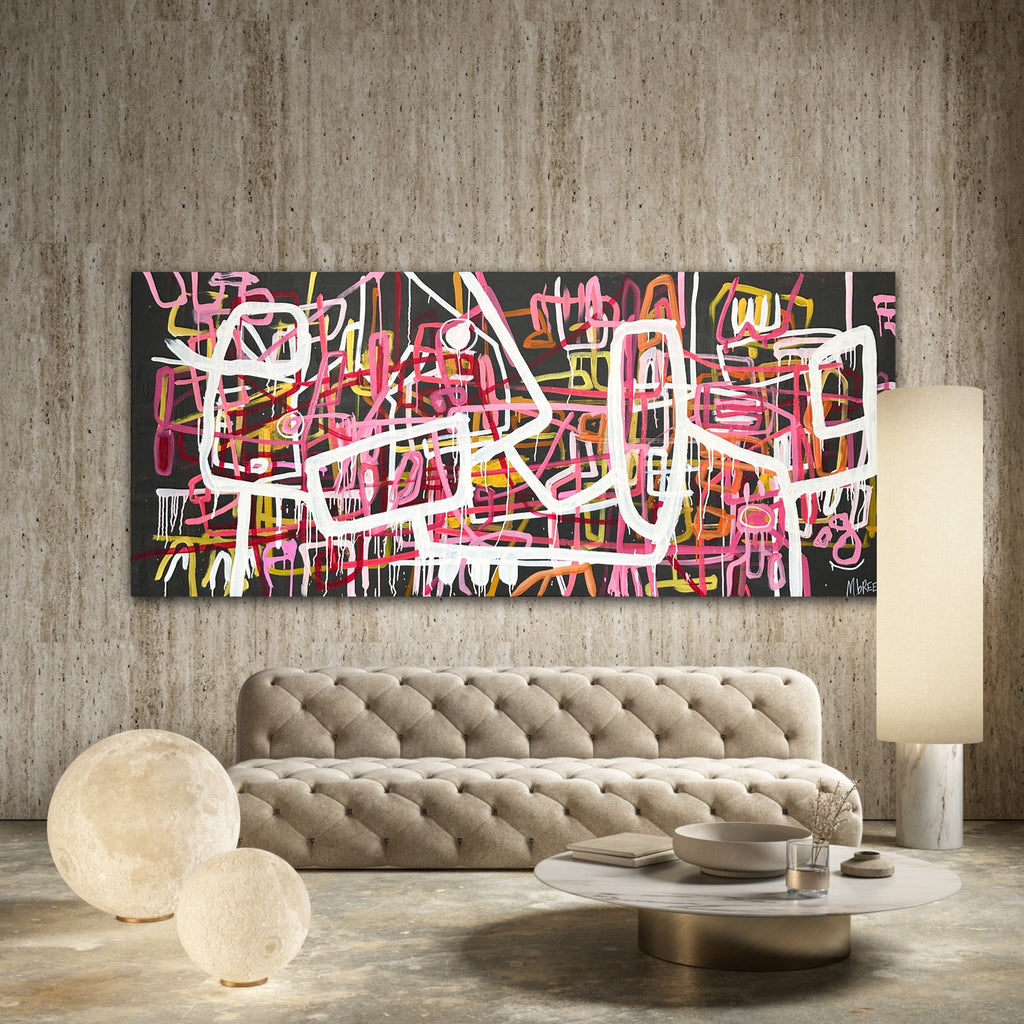Naming a painting is an art form in itself. For me, it’s not about description or definition—it’s about resonance. Since I don’t paint to imitate life, I have the freedom to go wherever I want with a title. That’s both liberating and, at times, a challenge.
A Stream of Consciousness Approach
I don’t sit down with a list of potential names or try to force a meaning onto a piece. Instead, I take a step back and let the artwork speak. I scan the surface—the colours, the movement, the interplay of shape and form—and let words rise to the surface. Sometimes, it’s immediate. Other times, I play with phrases, shifting them around in my head until something clicks.
The Moment It Resonates
That moment is everything. It’s not about logic or a perfect fit; it’s about a feeling. A name might come from an abstract thought, a fleeting memory, or simply a combination of words that feel right together. There’s no rule, no structure—just instinct. And when a title sticks, I know it’s the one.
The Challenge of Endless Possibility
Having total creative freedom means there are no constraints—but that can make choosing harder. When a painting isn’t tied to an obvious subject, the options are endless. That’s why I don’t overthink it. If a title lingers in my mind, if it sits well with the work, that’s my cue to stop searching.
Every name adds another layer to the piece. It doesn’t define the painting—it simply offers an entry point for the viewer to engage, interpret, and connect in their own way.
So next time you see one of my titles, know that it wasn’t chosen at random. It arrived in its own time, in its own way—just like the painting itself.

